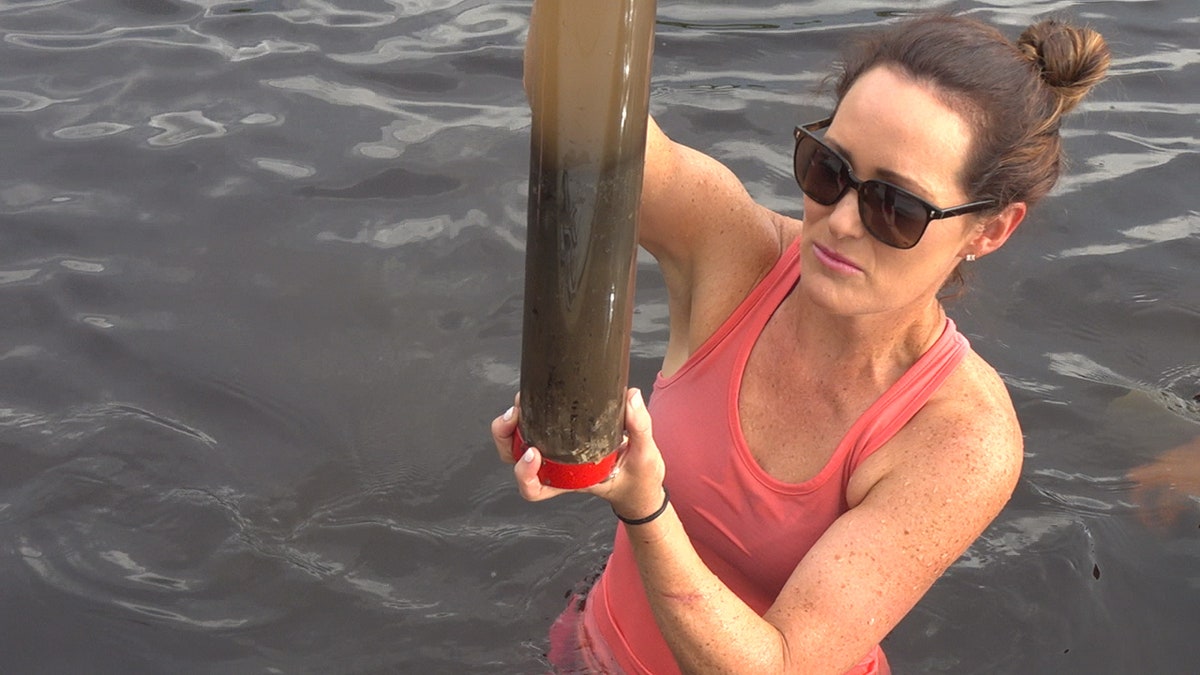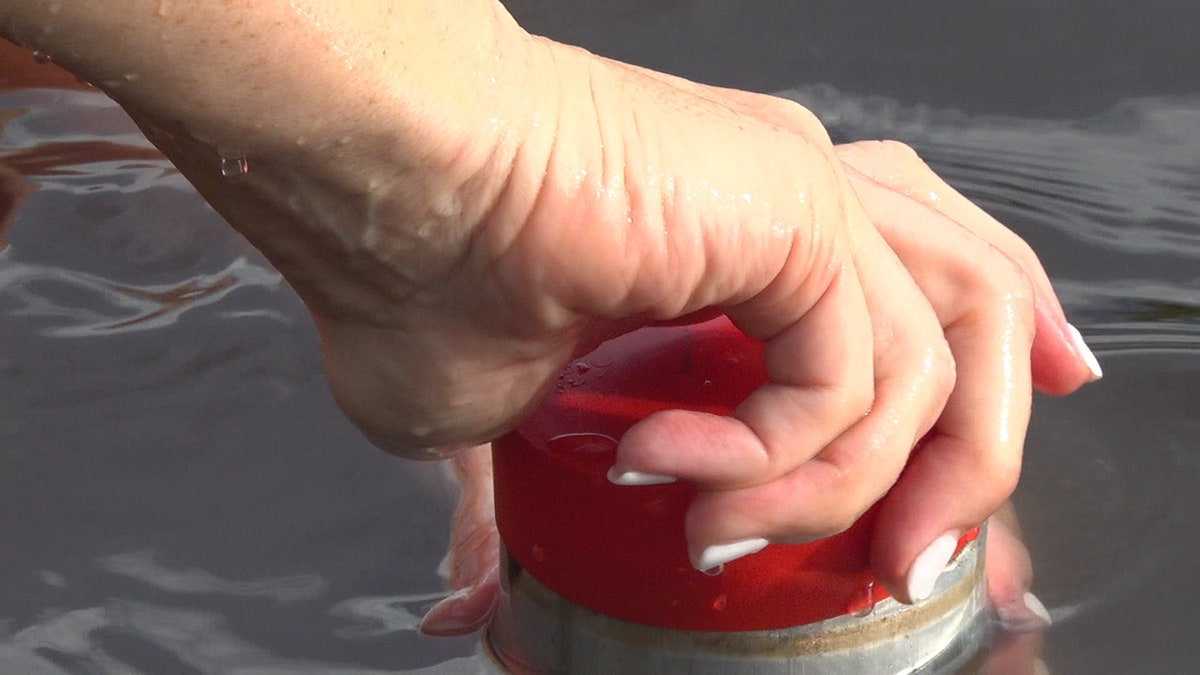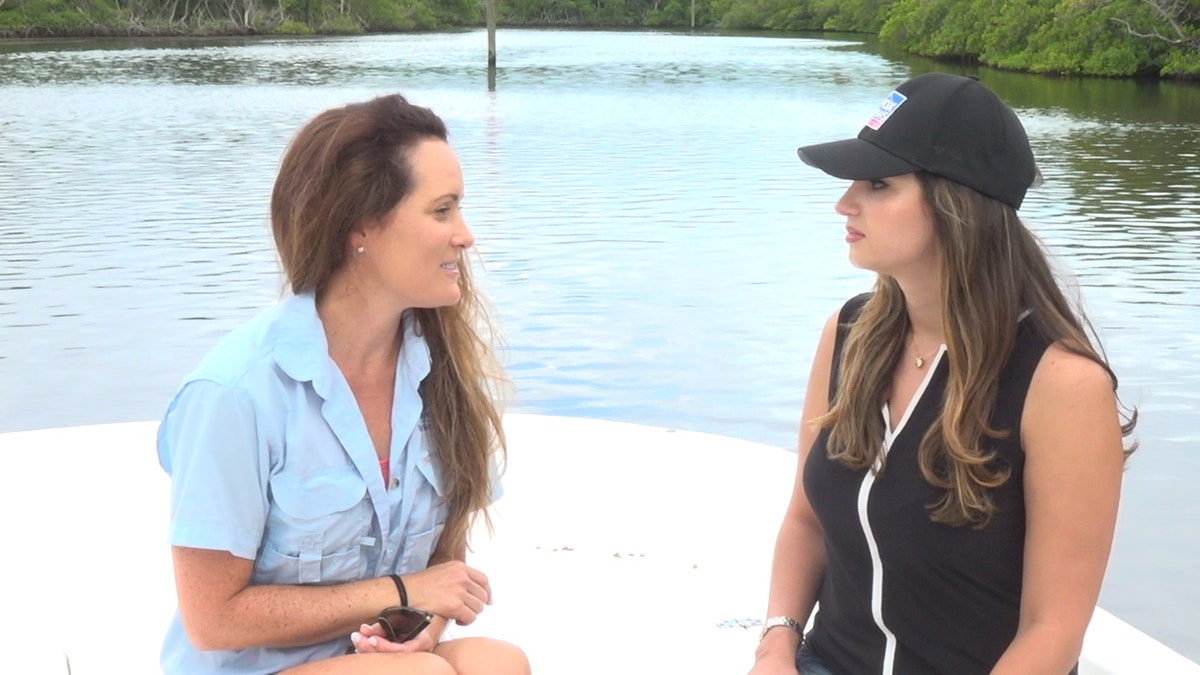Florida hurricanes predicted by scientist with unique technique
The technique involves digging underwater to find hurricane sediment
BONITA SPRINGS, Fla. — Months after Hurricane Michael bruised the Florida Panhandle and Irma slammed into the Florida Keys, the state is bracing for what comes next. One scientist is digging for those answers underwater.
"It's a relatively new science," said Joanne Muller, a scientist in the Water School at Florida Gulf Coast University.
Muller said she has been "coring" for more than 20 years. The technique involves digging in the dirt underwater to uncover information about hurricanes from thousands of years ago that can help predict how strong future hurricanes will be.
"We sample the cores, we can date the sediment using radio-metric tools, and then we know how old those hurricane layers are, going back through time," Muller explained.

Scientist Joanne Muller matches up hurricane records with sea surface temperatures to predict the chaos these massive storms will create. (Elina Shirazi/Fox News)
By examining the hurricane layers in the core, Muller can discover the geological record using clues such as sand and shells..
"We can say the top is zero years, so this is present day, and then we'll get dates throughout the core. Maybe 100 years, 1,000 years, 2,000 years … so we know exactly when these storms occurred historically, how far they go back in time and how many there were at different periods," she said.
As part of the coring process, Muller and her team use long aluminum pipes to pull samples from the muck and dirt of the sea floor. On a recent ride out with Fox News, the team took samples in Estero Bay just north of Naples, Florida, an area Muller said has seen a lot of hurricane activity in the past.

After they gather the sediment from underwater, they cut the tubes in half and start their research. (Elina Shirazi)
"We are pretty much looking for a really organic bottom. A lot of dark sediment, really fluffy sediment that we can get a core through," said Adam Catasus, a Florida Gulf Coast University researcher.
After they get the core samples, the scientist suctions the top of the aluminum pipes to prevent the sediment from falling out. Muller said some of the oldest hurricane overwash layers her team has found date to between 4,000 to 5,000 years ago.
Muller said one patch she dug up was likely placed in the 1960s when Hurricane Donna made landfall.

Muller drives an aluminum pipe down into the sediment underwater, and then suctions the top with red caps on the end until they split it open for research. (Elina Shirazi)
By studying patterns in the sediment, Muller points to evidence that forecasts more severe hurricanes. She matches up hurricane records with sea surface temperatures to predict the chaos these massive storms will create as sea temperatures continue to rise.
"What we're seeing are more intense hurricanes and 2017 is an excellent example of that. So at the moment, we're projecting that we'll see more intense hurricanes in the future and the geologic record that we are uncovering, is showing the same thing," Muller said.
Her predictions match up with the latest National Oceanic and Atmospheric Administration forecasts.

Muller explains the coring process. She says the technique involves digging in the dirt underwater to uncover information about hurricanes from thousands of years ago, that can help predict how strong future hurricanes will be. (Elina Shirazi)
NOAA warns of above-normal hurricane activity, with the possibility of five to nine hurricanes. At least two of those could be major hurricanes.
"The effort that we're working toward is trying to fill in the gaps of the National Hurricane Center's HURDAT database. So this is a database that has all the information on storms that have occurred from present day, going back about 160 years. The work that we're doing is really trying to make that database a lot stronger to fill in gaps so that we can be more realistic about hurricanes in the future,” Muller said.

According to The National Oceanic and Atmospheric Administration, the season has the potential to be very dangerous. There are 10 to 17 total named storms that are anticipated this season — those storms are projected to have winds up to 39 miles per hour or greater. NOAA forecasts predict that not all of those storms are expected to make landfall. (Elina Shirazi/Fox News)
CLICK HERE TO GET THE FOX NEWS APP
Muller said the importance of her work goes beyond the research. "These cores, they tell a story and it's the thing that I love so much about geology, there's so much history there. It's really important that we can understand them as best as we can so that we can make more accurate predictions going forward."
Hurricane season lasts until Nov. 30.

